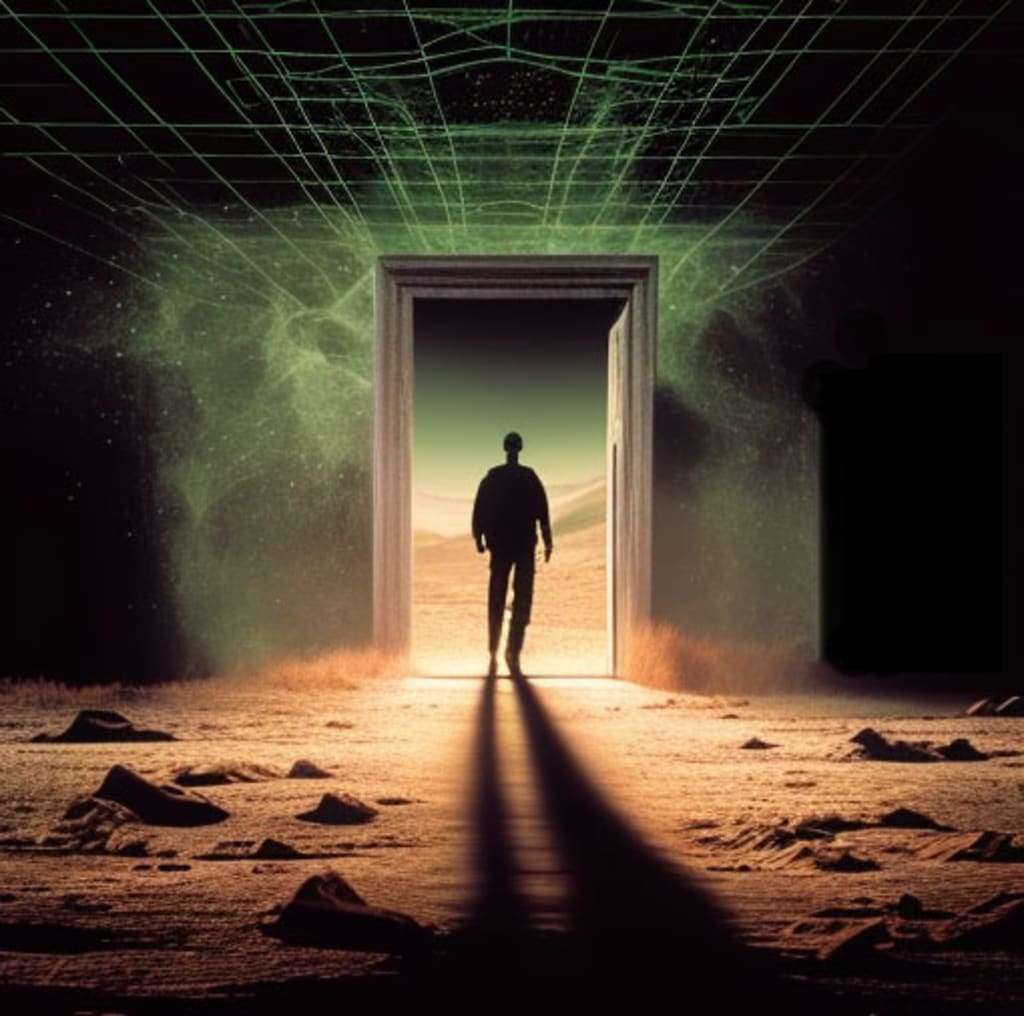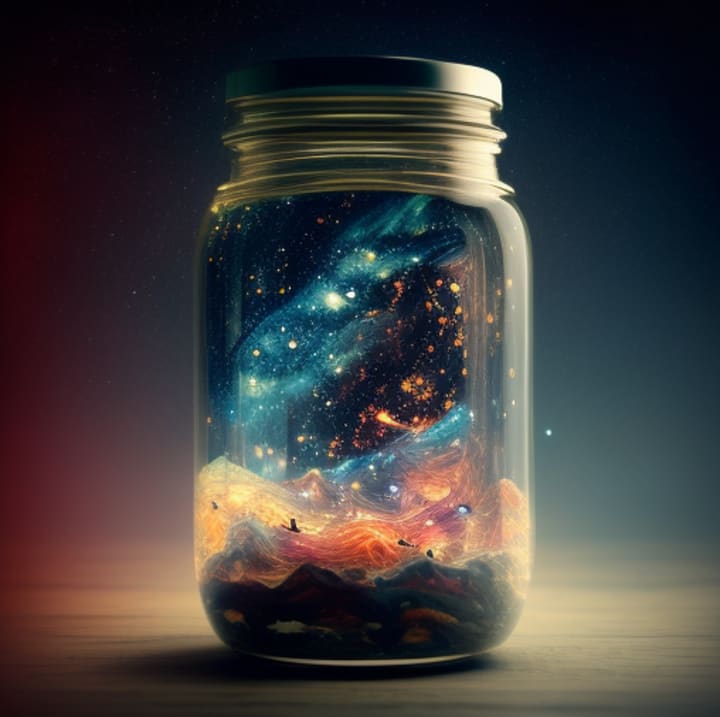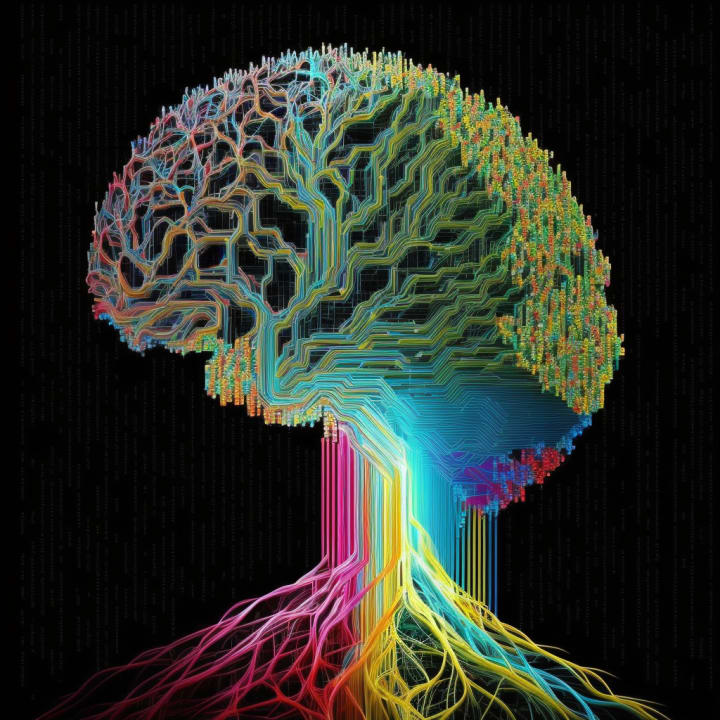Simulation Theory - Are We Living in a Simulation?
Lets explore the idea with potential evidences

Have you ever questioned the nature of reality? Is it possible that the world we live in is a kind of simulation? This idea may seem unbelievable, but there are several arguments supporting its potential truth. These arguments come from different perspectives making the theory an interesting, and thought-provoking topic. It has the power to challenge our understanding of reality and potentially change our perspective on life. Let's explore this theory and discover what it may reveal.
Simulation perspective:
Imagine a computing system so advanced that it can calculate and simulate every single detail of the entire universe. This system would undoubtedly be far more complex and sophisticated than any computer we can imagine. However, even the most advanced systems have limits.
There is such a limit in our own universe. The speed of light. At approximately 300,000 kilometers per second, it is the maximum speed at which anything can travel through space. According to Einstein's special theory of relativity, It would take an infinite amount of energy to accelerate objects with mass to the speed of light. Objects without mass, like photons and radio waves, can reach the speed of light, but they can't go any faster.
But why should such a speed limit exist? According to the simulation theory the answer may lie in the limitations of the processing power of the simulator. Just as a computer can only process a certain number of calculations per second, the simulator of our universe may have a processing power limit that determines the maximum speed at which all entities interact with each other.
Another aspect of simulations is that they must be digital rather than analog. Analog refers to an infinite amount of data, or continuity without gaps. However, even the most advanced simulation systems cannot process an infinite amount of data. This is why simulations are digital, working with specific values, and are discontinuous. Although reality may seem continuous and seamless, quantum physics suggests that the universe may actually be discontinuous, with energy emitted or absorbed in discrete units (quanta). MIT professor Edward Fredkin says, "It was once thought that fluid flow was continuous, electricity was perceived as a continuous current, and now we know that the structure of matter is discrete and we explain electric current in terms of the movement of electrons."
Simulations rely on mathematical concepts such as constants, functions, and algorithms to function. These mathematical elements can be found throughout the universe. The number pi, the gravitational constant G or E=mc2 are just a few examples. Scientist Max Tegmark, summarizes the situation. "All matter is made up of particles, which have properties such as charge and spin, and these properties are purely mathematical. If you accept the idea that both space itself, and all the stuff in space, have no properties at all except mathematical properties," then the idea that everything is mathematical starts to sound a little bit less insane."

Fine-tuned universe perspective:
This argument states that the physical constants and laws of the universe are so precisely set that if they were even slightly different, life as we know it would not be possible. For example, the gravitational constant must be within a certain range for stars to form, and the strong nuclear force must be within a certain range for atoms to hold together. The probability of these constants and laws falling within the necessary range for life to exist by chance is incredibly low.
So, how can we explain this seemingly perfect set-up? One theory is the multiverse theory, which proposes that there are an infinite number of universes, each with their own set of physical constants and laws. With infinite possibilities, it's likely that we exist in the one that allows for life.
Another theory is the simulation theory, which suggests that we may be living in a purposely designed simulation. If this is the case, the fine-tuning of the universe would make perfect sense.
Physics experiments perspective:
The double-slit experiment : is one of the most famous experiments in science that has yet to be fully understood. When photons from a light source are passed through a plate with two slits, the resulting pattern on a screen is not just two lines as one might expect, but rather a series of lines that are indicative of the wave-like behavior of light. However, when this experiment is repeated using a detector placed to determine which slit individual photons passed through, the pattern on the screen becomes two lines, indicating that light also exhibits particle-like behavior. This phenomenon is known as the "observer effect" and measurement causes the photons to stop behaving like waves and start behaving like particles.
While the exact reason for the "observer effect" is not yet fully understood, it is possible that the simulation theory can provide some insight. When a measurement is made, in other words when exact information is requested about the path of photons, the simulation may calculate the positions of the photons and convert the probability into certainty, providing the desired information. However, when a measurement is not made, and no information is requested, the simulation may allow the photons to move in a pre-defined waveform, where they can exist in multiple possible positions and may save on processing power by not making any calculations.
Quantum entanglement : is a strange phenomenon that has puzzled scientists for decades. When two particles, such as electrons or photons, are produced by the same source, they become "entangled" and are able to communicate with each other, no matter how far apart they are. This means that if one particle is changed, the other entangled particle will be affected instantly, even if they are millions of light years apart. According to the laws of physics, information cannot be transferred faster than the speed of light. So how can these particles communicate and react at the same time, as if they were right next to each other?
In 2022, scientists who were able to prove the reality of quantum entanglement through experiments were awarded the Nobel Prize in Physics. However, there is still no explanation about how this happens. If we assume that the entire universe works like a software, entangled particles may be communicating with each other in a way similar to how different parts of a software interact with each other.
Computer technologies perspective:
Some scientists argue that it is impossible to simulate the universe because it requires too much processing power. However, humanity has made tremendous progress in terms of processing power in recent decades. In the early 1980s, computers used processors with a processing power of just 0.33 MIPS (million instructions per second). Today, the processors in our computers have a processing power of over 700,000 MIPS. This means that our processing power has increased by about 2 million times in just 40 years. It is likely to continue to increase at an even faster pace in the future with technologies such as graphene-based microchips, optical computers that use photons instead of electrons, and game-changing quantum computers. Now imagine what humanity can achieve in a couple of thousand years.
Considering that the first humans (homo sapiens) appeared 300,000 years ago, it is not unreasonable to think that humanity could continue to exist for thousands of years more, without facing extinction or destroying itself. Eventually Humanity may reach the level of processing power needed to simulate the entire universe.
If we believe in this, then we must also consider the possibility that this has already been done by someone or something else. This in turn raises the possibility that we are currently living in a simulation ourselves. This idea is supported by people like Elon Musk, who has famously stated that "The universe we live in has a 99% probability of being a computer simulation."

Brain, Simulator of reality:
We don't know if the universe is a simulation, but we do know that the reality we perceive is a simulation created by our brain. Our brain processes information from our senses to create a simulated version of reality that our consciousness can experience. This allows us to interact with our environment. We all experience a common reality because our brains function similarly. To better understand this concept think about the way we experience dreams. In our dreams, we experience a simulated reality that is created entirely from memories and past experiences. We might taste the sweetness of an apple, but there is no actual apple present.
Conclusion :
So, what is the answer? Are we living in a simulation? As arguments from different perspectives reveal, there is such a possibility. However, it is not possible to prove or disprove the theory with today's technology. Is the universe we live in self-formed through randomness or is it a completely predictable, calculated and designed universe? You have to think about what to believe and decide for yourself.
About the Creator
Ahmet Hidayetoglu
Born in 1974, is a mechanical engineer and computer programmer who has a keen interest in following technological advancements.
Enjoyed the story? Support the Creator.
Subscribe for free to receive all their stories in your feed. You could also pledge your support or give them a one-off tip, letting them know you appreciate their work.






Comments
There are no comments for this story
Be the first to respond and start the conversation.